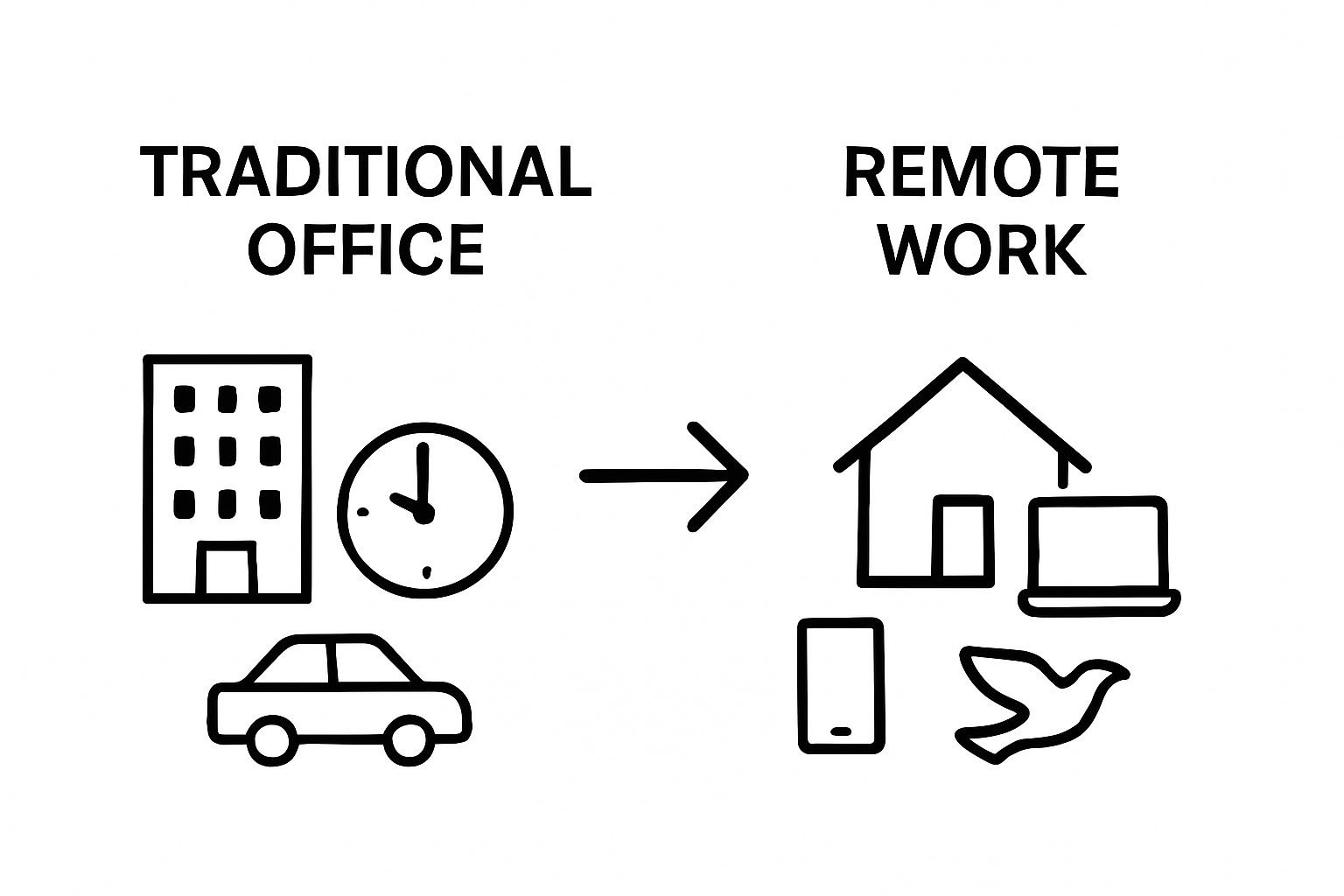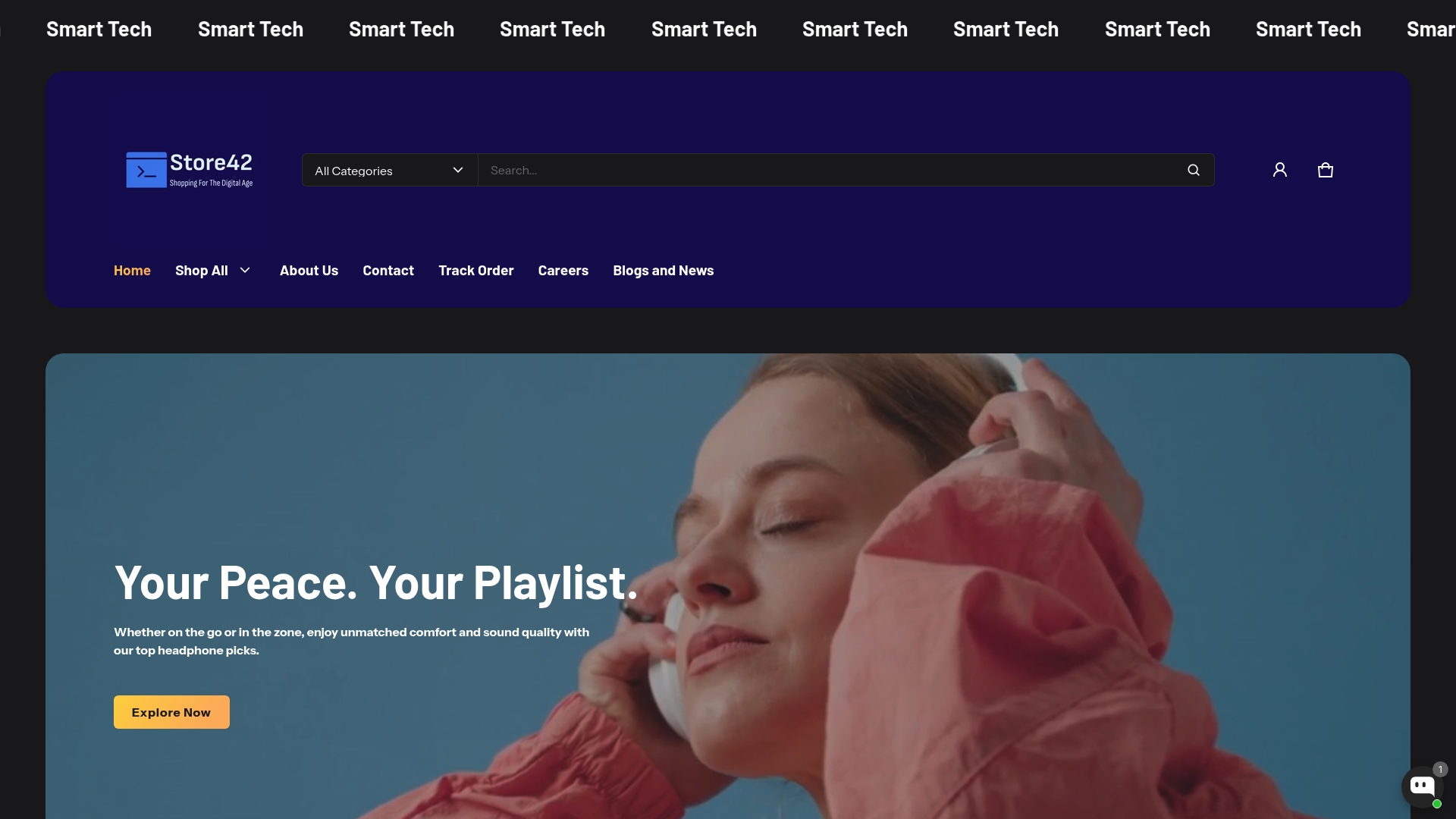Remote work setups have completely changed the way people approach their daily jobs and now nearly 28 percent of American workers do their jobs from home at least part of the week. That sounds like massive freedom and comfort, right? Most people picture pajamas and laptops but miss the real story. The secret power actually lies in building a smart workflow where tech, habits, and routines all work together and that’s where true success starts to happen.
Table of Contents
- What Is Remote Work Setup Workflow?
- Why Remote Work Setup Workflow Matters
- How Remote Work Setup Workflow Operates
- Key Components Of An Effective Remote Work Setup
Quick Summary
| Takeaway | Explanation |
|---|---|
| Establish robust digital infrastructure | Use reliable technology for communication and collaboration to support remote work. |
| Implement clear communication protocols | Create defined channels for team interaction to encourage efficient exchanges. |
| Define performance tracking methods | Measure work output using established metrics for accountability and progress. |
| Design an ergonomic workspace | Create a comfortable and efficient work environment to enhance productivity. |
| Focus on personal skill development | Cultivate skills such as time management and adaptability to thrive remotely. |
What is Remote Work Setup Workflow?
A remote work setup workflow represents a systematic approach to organizing, executing, and managing professional tasks and responsibilities outside of a traditional office environment. Unlike conventional workplace structures, this workflow integrates digital technologies, personal productivity strategies, and flexible work arrangements to create an efficient and adaptable professional ecosystem.
Understanding the Core Concept
At its fundamental level, a remote work setup workflow is about creating a structured yet flexible system that enables professionals to perform their job responsibilities effectively from any location. Learn more about digital nomad strategies that can enhance your remote work approach.
The workflow encompasses several critical elements that transform a potential work-from-anywhere scenario into a reliable, productive system:
- Digital Infrastructure: Establishing robust technological tools and platforms
- Communication Protocols: Creating clear channels for team interaction
- Performance Tracking: Implementing methods to measure and evaluate work output
- Personal Workspace Management: Designing an ergonomic and efficient home or mobile work environment
Key Characteristics of an Effective Remote Work Setup
A successful remote work setup workflow is characterized by its ability to bridge physical distance through strategic planning and technological integration. According to the U.S. Office of Personnel Management, remote work is fundamentally about creating a flexible arrangement where professional responsibilities can be fulfilled outside traditional office boundaries.
The workflow isn’t just about location independence but about creating a comprehensive system that ensures:

- Consistent productivity
- Seamless team collaboration
- Clear performance expectations
- Technological reliability
- Personal work-life balance
By understanding and implementing a well-designed remote work setup workflow, professionals can transform geographical limitations into opportunities for enhanced flexibility, creativity, and professional growth.
Why Remote Work Setup Workflow Matters
The significance of a well-structured remote work setup workflow transcends mere technological convenience. It represents a fundamental transformation in how professionals approach productivity, collaboration, and personal work management. Explore the rising trends of remote work to understand its broader implications.
Organizational Performance and Efficiency
A strategic remote work setup workflow directly impacts organizational performance by creating systems that optimize human potential beyond physical workspace constraints. According to the U.S. Department of the Interior, telework enables recruitment and retention of high-quality talent while providing substantial operational advantages.
The workflow matters because it addresses critical professional challenges:
- Eliminates geographical limitations for talent acquisition
- Reduces operational overhead and infrastructure costs
- Enables continuous productivity across different time zones
- Supports diverse workforce flexibility
Personal Productivity and Professional Development
Beyond organizational benefits, a robust remote work setup workflow empowers individual professionals to design personalized productivity ecosystems. This approach transforms work from a location-dependent activity to a skill-driven, outcome-focused endeavor.
Key personal advantages include:
- Enhanced work-life integration
- Increased autonomy in managing professional responsibilities
- Opportunity for continuous skill development
- Reduced commute stress and improved mental well-being
By establishing a comprehensive remote work setup workflow, professionals and organizations can create adaptive, resilient work environments that leverage technological capabilities while prioritizing human potential and individual performance.
To help readers quickly compare the organizational and personal benefits explained in the previous section, the table below organizes these points side by side for clearer understanding.
| Aspect | Organizational Benefits | Personal Benefits |
|---|---|---|
| Talent Accessibility | Broadens pool for recruitment beyond geographic limits | Opens up roles unrestricted by location |
| Cost Savings | Reduces operational overhead and infrastructure costs | Saves on commuting and daily work expenses |
| Productivity | Enables continuous output across multiple time zones | Enhances work-life integration, reduces commute fatigue |
| Flexibility | Supports diverse and adaptable scheduling | Provides increased autonomy and customizable work routines |
| Professional Growth | Attracts and retains high-quality talent | Fosters skill development and stress management |
| Well-being | Improves retention and satisfaction through flexible policies | Contributes to improved mental health and well-being |
How Remote Work Setup Workflow Operates
A remote work setup workflow operates through a complex, interconnected system of technological tools, communication protocols, and strategic management practices. Discover strategies for transitioning to remote work to better understand the operational mechanics.
Technological Infrastructure
The operational framework of a remote work setup workflow relies heavily on digital platforms that facilitate seamless communication, collaboration, and task management. According to the University of Michigan’s Remote Work Collection System, effective remote work requires robust technological systems that streamline work agreements and approvals.
The core technological components include:
- Cloud-based collaboration platforms
- Project management software
- Secure communication channels
- Performance tracking and reporting tools
- Virtual private network (VPN) infrastructure
Operational Coordination and Management
Successful remote work workflows demand a structured approach to coordination that transcends traditional office management. This involves creating clear expectations, establishing communication norms, and implementing performance measurement strategies that focus on outcomes rather than physical presence.
Key operational principles include:
- Defining clear performance metrics
- Establishing regular check-in and reporting schedules
- Creating transparent communication protocols
- Developing flexible yet consistent work guidelines
- Implementing trust-based management approaches
By integrating technological capabilities with strategic management practices, remote work setup workflows create dynamic, adaptable professional environments that enable professionals to perform effectively from anywhere in the world.
Key Components of an Effective Remote Work Setup
Creating an effective remote work setup requires a holistic approach that integrates technological infrastructure, personal workspace design, and professional skill development. Check out our digital nomad essentials checklist to enhance your remote work readiness.
Technological and Digital Infrastructure
The foundation of a successful remote work setup lies in robust digital capabilities. According to Duke University’s Remote Work initiative, a comprehensive technological infrastructure is crucial for maintaining productivity and professional connectivity.
Key technological components include:
- High-speed, reliable internet connection
- Ergonomic computing devices
- Secure virtual private network (VPN)
- Cloud-based collaboration and storage platforms
- Noise-canceling communication tools
Personal Workspace and Professional Skills
Beyond technological tools, an effective remote work setup demands intentional personal development and workspace design. Successful remote professionals cultivate a specific set of skills and create an environment that supports sustained productivity and professional growth.
Essential personal components encompass:

- Dedicated, ergonomically designed workspace
- Strong self-motivation and discipline
- Advanced digital communication skills
- Effective time management techniques
- Adaptability and stress management capabilities
By strategically integrating technological infrastructure with personal skill development, professionals can create a comprehensive remote work setup that enables flexibility, productivity, and continuous professional evolution.
The following table summarizes the essential components of an effective remote work setup, clarifying how both technology and personal skills contribute to workflow success.
| Component | Description |
|---|---|
| High-speed Internet | Ensures reliable connections for all online activities |
| Ergonomic Devices | Improves comfort and health during prolonged work |
| Secure VPN | Protects sensitive company and client data |
| Cloud Collaboration Platforms | Enables real-time teamwork and document management |
| Noise-canceling Tools | Minimizes distractions for better focus |
| Dedicated Workspace | Creates a boundary between home and work for better productivity |
| Self-motivation & Discipline | Drives consistent performance outside traditional supervision |
| Digital Communication Skills | Facilitates clear online collaboration and feedback |
| Time Management | Maximizes efficiency and reduces procrastination |
| Adaptability | Supports continuous adjustment to new tools and remote challenges |
Unleash the Power of Your Remote Work Setup
Building an effective remote work setup workflow is tough when you face constant distractions, tech issues, or struggle to stay organized away from a traditional office. You need digital infrastructure that is as mobile and resilient as you are. That means portable chargers that never make you hunt for an outlet, noise-canceling headphones that cut through chaos, and clothing that never slows you down. Many remote professionals find that lack of reliable tools or a cluttered workspace kills productivity and dampens creativity.
Imagine a remote setup where every piece of gear is chosen for agility, durability, and easy transitions. Store 42 curates the essentials for people like you—ambitious, always-on, and ready to take on new possibilities from wherever you happen to be. Whether you need minimalist travel gear or performance-ready clothing, our collection closes the gap between comfort and productivity.

Do not let technology or lack of preparation slow you down when your workflow demands efficiency and flexibility. Shop Store 42 now for fast shipping, and set yourself up for remote work success. Give your workflow the power to keep up with your biggest ambitions today.
Frequently Asked Questions
What is a remote work setup workflow?
A remote work setup workflow is a systematic approach to organizing and managing tasks outside of a traditional office, utilizing digital technologies and personal productivity strategies to enhance efficiency and adaptability.
Why is a remote work setup workflow important?
A well-structured remote work setup workflow is crucial for maintaining productivity, enabling effective collaboration, and creating a flexible work environment that meets contemporary professional challenges.
How can I improve my remote work setup workflow?
You can enhance your remote work setup workflow by establishing reliable technology, creating clear communication protocols, tracking performance, and designing an ergonomic personal workspace that encourages productivity.
What are key components of an effective remote work setup?
The key components of an effective remote work setup include a robust technological infrastructure, a dedicated workspace, strong self-motivation, and effective time management techniques.

